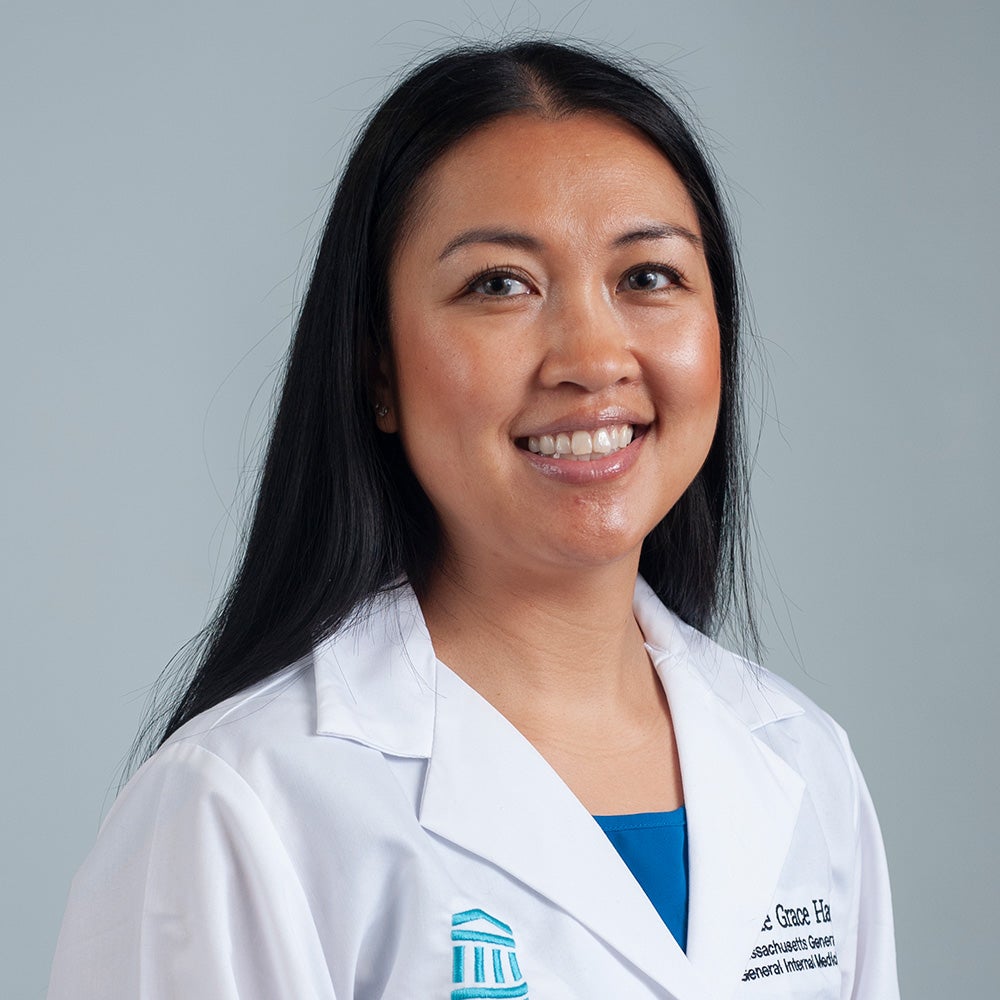
Opinion
Can nurse practitioners solve the primary care shortage?
An estimated 100 million people in the United States—almost a third of the population—don’t have a primary care provider. Nurse practitioners could bridge this urgent health care gap, but social stereotypes that portray nurses as subordinate to doctors, along with archaic state regulations, prevent these qualified professionals from doing so.
The current care gap is driven mostly by a lack of doctors. Medical students are choosing higher-paying specialties over practicing primary care. Often, this is to help them pay their medical school debt.
The nursing community is poised to fill that gap. There are 5.2 million registered nurses in the U.S., and they are increasingly earning degrees and certifications that qualify them as primary care providers. More than 70 percent of RNs hold a bachelor of science degree, a number that is growing. Then there are 385,000 licensed nurse practitioners—a designation that allows them to order tests, diagnose patients, and prescribe treatments, just as a doctor would. Nearly 90 percent of nurse practitioners working in the U.S. today have a master’s or doctorate degree and are fully certified to practice in areas such as pediatrics, family medicine, women’s health, adult medicine, or gerontology.
Sign up for Harvard Public Health
Delivered to your inbox weekly.
It usually takes at least seven years and an average of 7,840 hours of clinical training and work experience to become a nurse practitioner. Nurse practitioners are well-trained for primary care work—and evidence shows they deliver it effectively, and often at a lower cost than doctors. Studies show that patients of nurse practitioners received the same quality care from nurse practitioners as from doctors, and that they feel highly satisfied with their care.
Other research shows that being seen by a nurse practitioner incurs costs similar to or less than being treated by a physician. One study, which analyzed two years of data from more than 47,000 medically complex patients with diabetes at 566 Veterans Administration facilities, found savings of at least hundreds of dollars per patient: $1,300 for hospitalization or emergency visits, $500 for outpatient care, and $300 in pharmacy costs. Another study, which analyzed four years of data from 475,000 Medicare beneficiaries, found that the patients of nurse practitioners received high-quality care while costing less for office visits as well as emergency room visits, hospital stays, nursing homes, and specialty care.
In 27 states, the District of Columbia, and U.S. territories, nurse practitioners are fully authorized to practice as independent clinicians. They conduct physical exams, make diagnoses, order and interpret lab tests and imaging studies, prescribe medications, provide treatment, and perform procedures, just like primary care physicians do. But when people think about their primary care, they think of the word “doctor.”
If policymakers and other industry decision-makers can help patients in the U.S. see nurse practitioners as primary care providers, patient access and health outcomes would improve, and health care costs would go down. Updating the laws and regulations in the states that don’t yet authorize nurse practitioners to work this way would help. But real change needs public health and health care practitioners to collaborate to change people’s minds. Patients and the public need to learn they can turn to nurse practitioners for expert, quality care.
To be sure, nurse practitioners are not physicians. But access to primary care nurse practitioners trumps no access every time. There is plenty of need—and space within health care—for physicians and nurse practitioners to work independently and collaboratively for the good of all the people in the United States who need care.
Source images: CreativeArchetype / iStock, SDI Productions / iStock, s-cphoto / iStock

Republish this article
<p>Without enough doctors, the U.S. needs other avenues of access.</p>
<p>Written by Grace Han</p>
<p>This <a rel="canonical" href="https://harvardpublichealth.org/policy-practice/can-a-nurse-practitioner-be-a-pcp-an-experienced-np-explains/">article</a> originally appeared in<a href="https://harvardpublichealth.org/">Harvard Public Health magazine</a>. Subscribe to their <a href="https://harvardpublichealth.org/subscribe/">newsletter</a>.</p>
<p class="has-drop-cap">An estimated <a href="https://www.usatoday.com/story/news/health/2023/02/28/americans-lack-primary-care-provider-report/11359096002/" target="_blank" rel="noreferrer noopener">100 million</a> people in the United States—almost a third of the population—don’t have a primary care provider. Nurse practitioners could bridge this urgent health care gap, but social stereotypes that portray nurses as subordinate to doctors, along with archaic state regulations, prevent these qualified professionals from doing so.</p>
<p>The current care gap is driven mostly by a lack of doctors. Medical students are choosing <a href="https://www.cbsnews.com/news/primary-care-doctors-shortage-pay-procedures/" target="_blank" rel="noreferrer noopener">higher-paying specialties</a> over practicing primary care. Often, this is to help them pay their medical school debt.</p>
<p>The nursing community is poised to fill that gap. There are <a href="https://www.journalofnursingregulation.com/article/S2155-8256(23)00047-9/fulltext" target="_blank" rel="noreferrer noopener">5.2 million registered nurses in the U.S.</a>, and they are increasingly earning degrees and certifications that qualify them as primary care providers. More than 70 percent of RNs hold a bachelor of science degree, a number that is growing. Then there are 385,000 licensed nurse practitioners—a designation that allows them to order tests, diagnose patients, and prescribe treatments, just as a doctor would. <a href="https://www.aanp.org/about/all-about-nps/np-fact-sheet" target="_blank" rel="noreferrer noopener">Nearly 90 percent</a> of nurse practitioners working in the U.S. today have a master’s or doctorate degree and are <a href="https://nurse.org/resources/nurse-practitioner/" target="_blank" rel="noreferrer noopener">fully certified</a> to practice in areas such as pediatrics, family medicine, women’s health, adult medicine, or gerontology.</p>
<p>It usually takes at least seven years and an average of 7,840 hours of clinical training and work experience to become a nurse practitioner. Nurse practitioners are well-trained for primary care work—and <a href="https://www.ncbi.nlm.nih.gov/pmc/articles/PMC7080399/" target="_blank" rel="noreferrer noopener">evidence</a> shows they deliver it effectively, and often at a lower cost than doctors. <a href="https://www.ncbi.nlm.nih.gov/pmc/articles/PMC7080399/" target="_blank" rel="noreferrer noopener">Studies</a> show that patients of nurse practitioners received the same quality care from nurse practitioners as from doctors, and that they feel highly <a href="https://www.aanp.org/advocacy/advocacy-resource/position-statements/quality-of-nurse-practitioner-practice" target="_blank" rel="noreferrer noopener">satisfied</a> with their care.</p>
<p><a href="https://www.healthaffairs.org/doi/10.1377/hlthaff.2019.00014" target="_blank" rel="noreferrer noopener">Other research</a> shows that being seen by a nurse practitioner incurs costs similar to or less than being treated by a physician. One <a href="https://www.healthaffairs.org/doi/10.1377/hlthaff.2019.00014" target="_blank" rel="noreferrer noopener">study</a>, which analyzed two years of data from more than 47,000 medically complex patients with diabetes at 566 Veterans Administration facilities, found savings of at least hundreds of dollars per patient: $1,300 for hospitalization or emergency visits, $500 for outpatient care, and $300 in pharmacy costs. <a href="https://www.ncbi.nlm.nih.gov/pmc/articles/PMC6338303/" target="_blank" rel="noreferrer noopener">Another study</a>, which analyzed four years of data from 475,000 Medicare beneficiaries, found that the patients of nurse practitioners received high-quality care while costing less for office visits as well as emergency room visits, hospital stays, nursing homes, and specialty care.</p>
<p>In <a href="https://nursejournal.org/nurse-practitioner/np-practice-authority-by-state/" target="_blank" rel="noreferrer noopener">27 states</a>, the District of Columbia, and U.S. territories, nurse practitioners are fully authorized to practice as independent clinicians. They conduct physical exams, make diagnoses, order and interpret lab tests and imaging studies, prescribe medications, provide treatment, and perform procedures, just like primary care physicians do. But when people think about their primary care, they think of the word “doctor.”</p>
<p>If policymakers and other industry decision-makers can help patients in the U.S. see nurse practitioners as primary care providers, patient access and health outcomes would improve, and health care costs would go down. Updating the laws and regulations in the states that don’t yet authorize nurse practitioners to work this way would help. But real change needs public health and health care practitioners to collaborate to change people’s minds. Patients and the public need to learn they can turn to nurse practitioners for expert, quality care.</p>
<p class=" t-has-endmark t-has-endmark">To be sure, nurse practitioners are not physicians. But access to primary care nurse practitioners trumps no access every time. There is plenty of need—and space within health care—for physicians and nurse practitioners to work independently and collaboratively for the good of all the people in the United States who need care.</p>
<script async src="https://www.googletagmanager.com/gtag/js?id=G-S1L5BS4DJN"></script>
<script>
window.dataLayer = window.dataLayer || [];
if (typeof gtag !== "function") {function gtag(){dataLayer.push(arguments);}}
gtag('js', new Date());
gtag('config', 'G-S1L5BS4DJN');
</script>
Republishing guidelines
We’re happy to know you’re interested in republishing one of our stories. Please follow the guidelines below, adapted from other sites, primarily ProPublica’s Steal Our Stories guidelines (we didn’t steal all of its republishing guidelines, but we stole a lot of them). We also borrowed from Undark and KFF Health News.
Timeframe: Most stories and opinion pieces on our site can be republished within 90 days of posting. An article is available for republishing if our “Republish” button appears next to the story. We follow the Creative Commons noncommercial no-derivatives license.
When republishing a Harvard Public Health story, please follow these rules and use the required acknowledgments:
- Do not edit our stories, except to reflect changes in time (for instance, “last week” may replace “yesterday”), make style updates (we use serial commas; you may choose not to), and location (we spell out state names; you may choose not to).
- Include the author’s byline.
- Include text at the top of the story that says, “This article was originally published by Harvard Public Health. You must link the words “Harvard Public Health” to the story’s original/canonical URL.
- You must preserve the links in our stories, including our newsletter sign-up language and link.
- You must use our analytics tag: a single pixel and a snippet of HTML code that allows us to monitor our story’s traffic on your site. If you utilize our “Republish” link, the code will be automatically appended at the end of the article. It occupies minimal space and will be enclosed within a standard <script> tag.
- You must set the canonical link to the original Harvard Public Health URL or otherwise ensure that canonical tags are properly implemented to indicate that HPH is the original source of the content. For more information about canonical metadata, click here.
Packaging: Feel free to use our headline and deck or to craft your own headlines, subheads, and other material.
Art: You may republish editorial cartoons and photographs on stories with the “Republish” button. For illustrations or articles without the “Republish” button, please reach out to republishing@hsph.harvard.edu.
Exceptions: Stories that do not include a Republish button are either exclusive to us or governed by another collaborative agreement. Please reach out directly to the author, photographer, illustrator, or other named contributor for permission to reprint work that does not include our Republish button. Please do the same for stories published more than 90 days previously. If you have any questions, contact us at republishing@hsph.harvard.edu.
Translations: If you would like to translate our story into another language, please contact us first at republishing@hsph.harvard.edu.
Ads: It’s okay to put our stories on pages with ads, but not ads specifically sold against our stories. You can’t state or imply that donations to your organization support Harvard Public Health.
Responsibilities and restrictions: You have no rights to sell, license, syndicate, or otherwise represent yourself as the authorized owner of our material to any third parties. This means that you cannot actively publish or submit our work for syndication to third-party platforms or apps like Apple News or Google News. Harvard Public Health recognizes that publishers cannot fully control when certain third parties aggregate or crawl content from publishers’ own sites.
You may not republish our material wholesale or automatically; you need to select stories to be republished individually.
You may not use our work to populate a website designed to improve rankings on search engines or solely to gain revenue from network-based advertisements.
Any website on which our stories appear must include a prominent and effective way to contact the editorial team at the publication.
Social media: If your publication shares republished stories on social media, we welcome a tag. We are @PublicHealthMag on X, Threads, and Instagram, and Harvard Public Health magazine on Facebook and LinkedIn.
Questions: If you have other questions, email us at republishing@hsph.harvard.edu.


